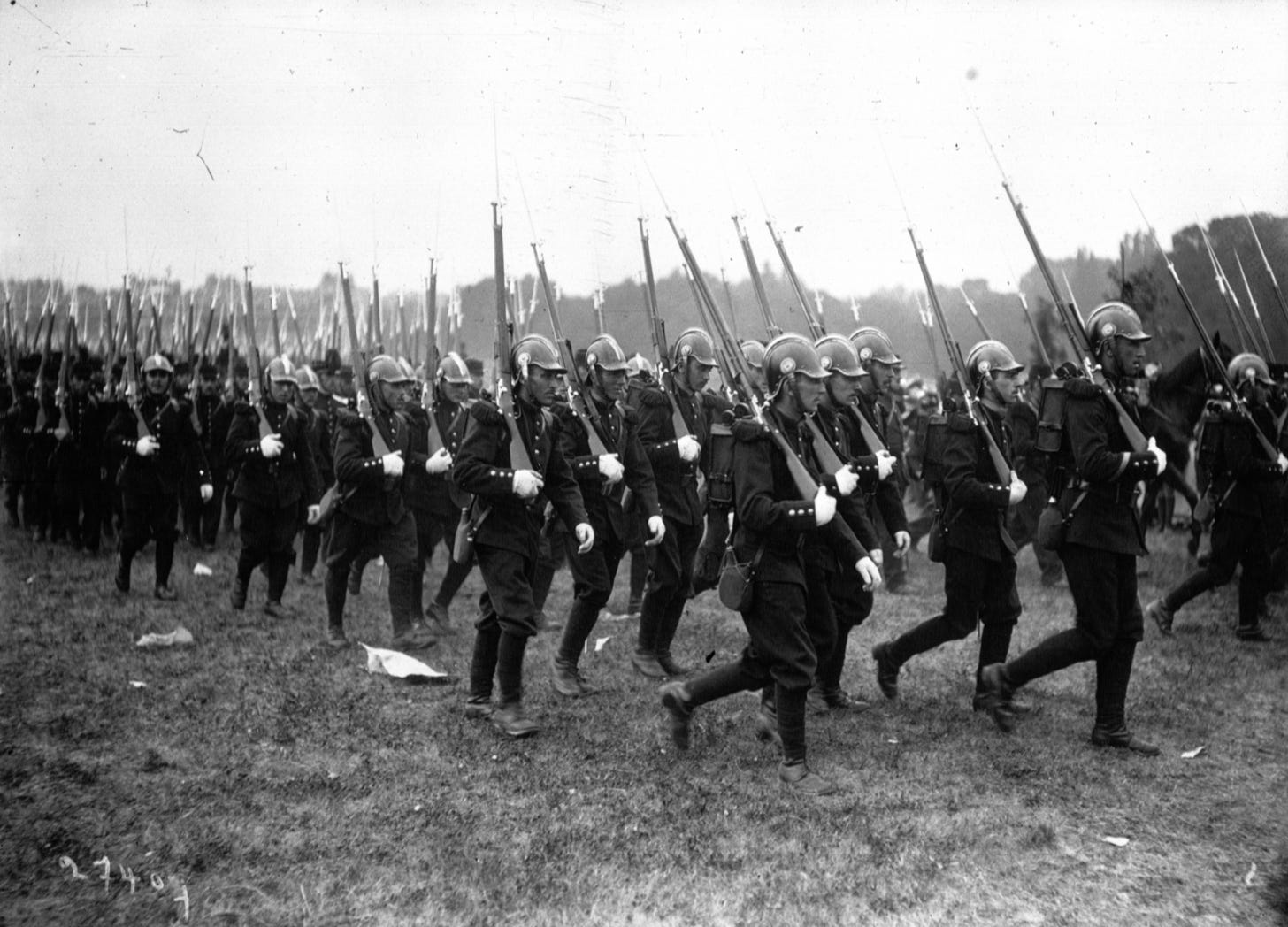Between 1905 and 1913, a French conscript assigned to a cavalry regiment had but two years to learn how to ride, shoot, and care for his mount. After the introduction of three-year service, he had time, not only to master the rudiments of the horse soldier’s trade, but to learn how to cooperate effectively with his comrades from other arms, his fellow troopers, and, most of all, his horse.
The Three Year Law also made possible a modest increase in the number of cavalry regiments on the peace establishment of the French Army. Thus, in March of 1913, the French government authorized the creation of two such units, the 22e and 23e Regiments de Chasseurs, for the forces at home. A little than a year later, in April and May of 1914, the French authorities gave permission for the raising of four additional cavalry regiments, all of which would belong to the Army of Africa.
Had it taken place, the formation of the 22e and 23e Regiments de Chasseurs would have completed the set of 21 cavalry regiments that, in the event of mobilization, were earmarked for service with army corps of the ordinary kind. Of the 20 formations of this type, 19 would receive a single cavalry regiment. The remaining formation, the oversized 6e Corps d’Armée, would get two cavalry regiments.
Of the four new cavalry regiments of the Army of Africa, two, the 7e and 8e Chasseurs d’Afrique, were units in which all of the troopers, all of the non-commissioned officers, and all of the officers, were citizens of France. In the remaining regiment, the 5e and 6e Spahis, all of the troopers, and roughly half of the non-commissioned officers and officers, came from Muslim communities in North Africa.
The relationship between Chasseurs d’Afrique and Spahis was similar to that of Zouaves and Tirailleurs Algériens. That is, the French authorities in Algeria and Tunisia took pains to maintain one unit of European troops for every comparable unit of indigenous troops.
Source: The text of laws creating the six cavalry regiments mentioned in this piece can be found on Gallica, the digital branch of the French National Library.
For Further Reading:
To Subscribe, Share, or Support:









